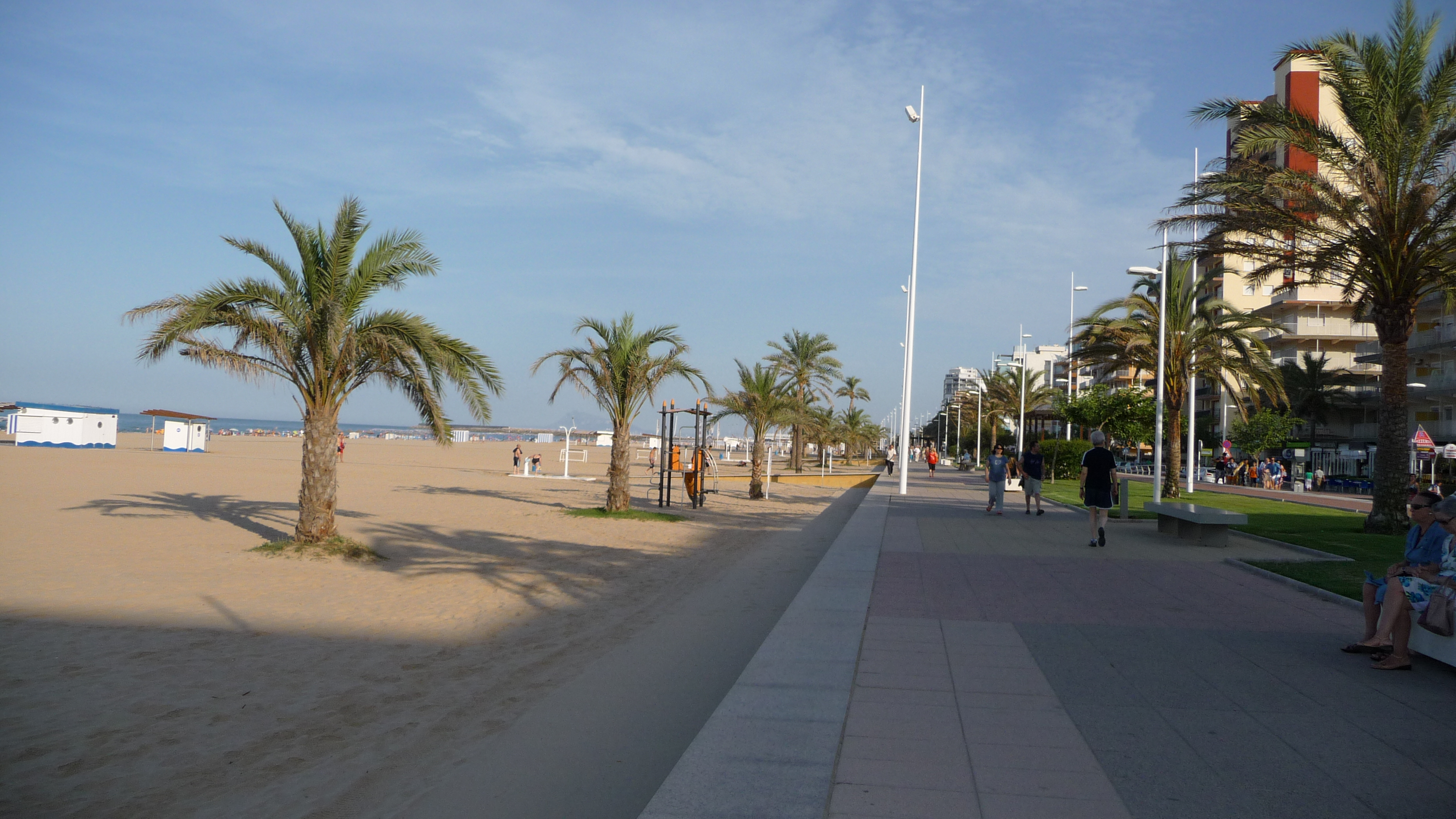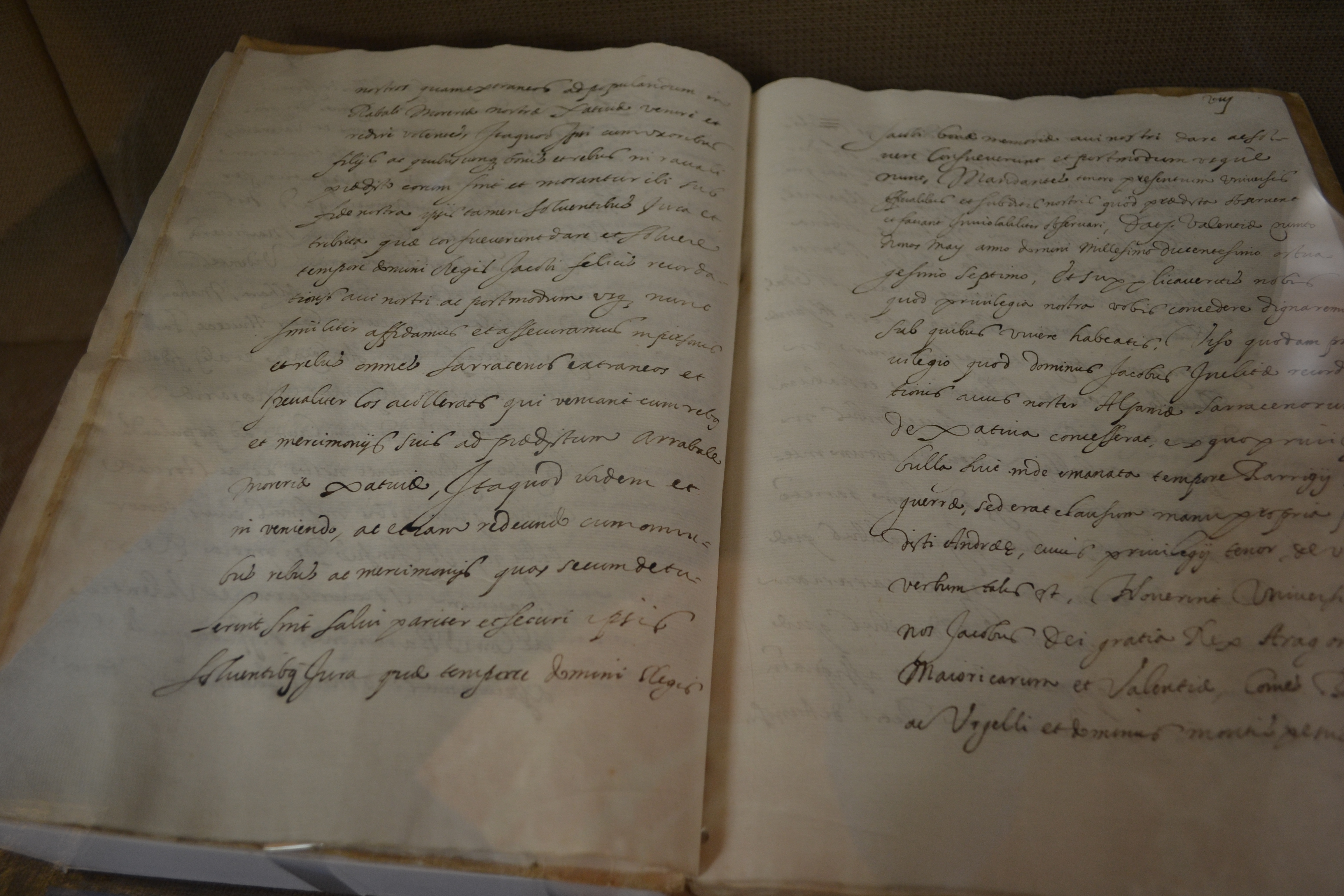|
Route Of The Borgias
The Route of the Borgias is a cultural route, that includes sites associated with the Borja or ''Borgia'', located in their native Valencian Community, Spain. The marketing of the route was inaugurated in 2007.Source: ABCPaseo por la historia de los Borja. The Borgias were a family of Aragonese origin, who settled in the Kingdom of Valencia, after its King James I of Aragon wrested control from Moorish rulers. In most translations, the family is known as the Borgia, the Italian way of transcribing the ''Borja'' surname from Valencian. The Popes Callixtus III and Alexander VI, Cesare Borgia and Lucrezia Borgia and Francis Borgia are the best-known figures of this lineage that originated in Canals and Xàtiva, and via Valencia came to Rome, then return to Valencia to refound the Duchy of Gandia. The route through the legacy of the Borgias has its beginning in the city of Gandia and ends in Valencia passing through various monuments and Valencian towns where the Borja ... [...More Info...] [...Related Items...] OR: [Wikipedia] [Google] [Baidu] |
Valencian Language
Valencian () or Valencian language () is the official, historical and traditional name used in the Valencian Community (Spain), and unofficially in the El Carche comarca in Murcia (Spain), to refer to the Romance language also known as Catalan.«Otra sentencia equipara valenciano y catalán en las oposiciones, y ya van 13.» ''20 minutos'', 7 January 2008.Decreto 84/2008, de 6 de junio, d ... [...More Info...] [...Related Items...] OR: [Wikipedia] [Google] [Baidu] |
Ducal Palace Of Gandia
The Ducal Palace of Gandia was, from the 14th century, the residence of the Royal Dukes of Gandía, and from 1485, the Borja family. It was the birthplace of Saint Francis Borja. The oldest part of the building dates from the 15th century in Valencian Gothic style, but was restored and turned into a sanctuary by the Society of Jesus. It is attached to the wall that surrounds the city and has two gates, a Gothic one and one from the Renaissance. Its remarkable interior has some interesting spaces, like the Golden Gallery, made in Baroque style, and the Crown Hall. Initially the Palace was designed as a civil Gothic style urban castle and was ultimately transformed into a comfortable fortified palace. The main entrance to the Palacio Ducal is a robust door with a rounded arch, which together with the hallways are the oldest elements of the Gothic palace. You enter from this area and there is an imposing central parade ground with an impressive exterior staircase by which you asce ... [...More Info...] [...Related Items...] OR: [Wikipedia] [Google] [Baidu] |
Collegiate Basilica Of Gandia
The Collegiate Basilica of Santa Maria of Gandia, also known as "La Seu", is the principal church of the city of Gandia, (Valencia). Construction commenced in the 14th century. The Collegiate Church of Santa María is a Valencian Gothic construction, located in the centre Gandia. Construction began in the 14th century and finalised two centuries later. Thanks to Pope Alexander VI, the temple was raised to the category of Collegiate. In the year 1931 was declared National Historic Monument. The church consists only of one central nave with lateral chapels adjacent to the walls. Its austere architectural style was once supplemented with rich interior decorations of altarpieces, paintings and sculptures, which disappeared during the Spanish Civil War. The Seo of Gandia is in itself a small architectural jewel, where the Puerta Sur or the Puerta de Santa María and the Puerta de los Apóstoles are noteworthy, one of the first works of Damián Forment, precursor of the Spanish Renais ... [...More Info...] [...Related Items...] OR: [Wikipedia] [Google] [Baidu] |
Gandia
Gandia ( es, Gandía) is a city and municipality in the Valencian Community, eastern Spain on the Mediterranean. Gandia is located on the Costa del Azahar (or ''Costa dels Tarongers''), south of Valencia and north of Alicante. Vehicles can access the city through road N-332. Gandia operated as an important cultural and commercial centre in the 15th and 16th centuries: in the 15th century it had a university. It was home to several important people, including the poet Ausiàs March (1400-1459) and the novelist Joanot Martorell (1410-1465). It is perhaps best known for the Borja or Borgia, through their family title, Duke of Gandia (originally created in 1399). Gandia is one of the largest coastal towns in Spain, with a population over 200,000 during summer, and a centre of commerce and tourism in its region. There are two main zones, Gandia City, which has all the historical monuments, commercial activity, and shopping, and Gandia beach, which has apartments and summer resi ... [...More Info...] [...Related Items...] OR: [Wikipedia] [Google] [Baidu] |
Duke Of Gandía
Duke of Gandía ( ca-valencia, Ducat de Gandia, ) is a title of Spanish nobility that was first created in 1399 by Martin of Aragon and granted to Alfonso of Aragon and Foix. It has its origin in the lordship of Gandía created in 1323 by James II of Aragon. Later, having no direct descendants, the title passed from the House of Barcelona to the House of Trastámara. The title was re-established in 1483 by Ferdinand II of Aragon as a favour to Cardinal Rodrigo Borgia for his son Pedro Luis (Pier Luigi de Borgia). The dukedom then went to Pier Luigi's half-brother Juan (Giovanni Borgia). He was assassinated, and his young son inherited the title. The fourth duke was the religious figure Francesco Borgia. After the death of his wife, with whom he had a large family, he became a Jesuit. Dukes of Gandía House of Aragon *Pedro de Aragón y Anjou, Lord of Gandía (1323–1359) #Alfonso of Aragon and Foix, Lord of Gandía (1359–1399), Duke of Gandia (1399–1412) # Alfonso of Ara ... [...More Info...] [...Related Items...] OR: [Wikipedia] [Google] [Baidu] |
Rome
, established_title = Founded , established_date = 753 BC , founder = King Romulus ( legendary) , image_map = Map of comune of Rome (metropolitan city of Capital Rome, region Lazio, Italy).svg , map_caption = The territory of the ''comune'' (''Roma Capitale'', in red) inside the Metropolitan City of Rome (''Città Metropolitana di Roma'', in yellow). The white spot in the centre is Vatican City. , pushpin_map = Italy#Europe , pushpin_map_caption = Location within Italy##Location within Europe , pushpin_relief = yes , coordinates = , coor_pinpoint = , subdivision_type = Country , subdivision_name = Italy , subdivision_type2 = Regions of Italy, Region , subdivision_name2 = Lazio , subdivision_type3 = Metropolitan cities of Italy, Metropolitan city , subdivision_name3 = Metropolitan City of Rome Capital, Rome Capital , government_footnotes= , government_type = Mayor–council gover ... [...More Info...] [...Related Items...] OR: [Wikipedia] [Google] [Baidu] |
Valencia
Valencia ( va, València) is the capital of the autonomous community of Valencia and the third-most populated municipality in Spain, with 791,413 inhabitants. It is also the capital of the province of the same name. The wider urban area also comprising the neighbouring municipalities has a population of around 1.6 million, constituting one of the major urban areas on the European side of the Mediterranean Sea. It is located on the banks of the Turia, on the east coast of the Iberian Peninsula, at the Gulf of Valencia, north of the Albufera lagoon. Valencia was founded as a Roman colony in 138 BC. Islamic rule and acculturation ensued in the 8th century, together with the introduction of new irrigation systems and crops. Aragonese Christian conquest took place in 1238, and so the city became the capital of the Kingdom of Valencia. The city's population thrived in the 15th century, owing to trade with the rest of the Iberian Peninsula, Italian ports and other loca ... [...More Info...] [...Related Items...] OR: [Wikipedia] [Google] [Baidu] |
Xàtiva
Xàtiva (, es, Játiva ) is a town in eastern Spain, in the province of Valencia, on the right (western) bank of the river Albaida and at the junction of the Valencia– Murcia and Valencia Albacete railways. It is located 25 km west of the Mediterranean Sea. During the Al-Andalus Islamic era, Arabs brought the technology to manufacture paper to Xàtiva. In the 12th century, Xàtiva was known for its schools, education, and learning circles. Islamic scholar Abu Ishaq al-Shatibi's last name refers to Xàtiva where he lived and died. After the Reconquista by Northern Christian kingdoms and the following Christian repopulation, the city became the cradle of one of the most powerful and controversial families of the Renaissance, the House of Borgia, which produced Popes like Callixtus III (Alfonso de Borgia) and Alexander VI (Rodrigo de Borgia). History Xàtiva (''Saetabis'' in Latin) was famous in Roman times for its linen fabrics, mentioned by the Latin poets Ov ... [...More Info...] [...Related Items...] OR: [Wikipedia] [Google] [Baidu] |
Canals, Valencia
Canals is a municipality (pop., INE 2007: 13,771) in the ''comarca'' of Costera in the Valencian Community, Spain. It shares borders with the municipalities of l'Alcúdia de Crespins, Cerdà, la Granja de la Costera, Xàtiva, Llanera de Ranes, Montesa, Torrella and Vallés (in the same ''comarca'') and with Aielo de Malferit and l'Olleria (''comarca'' of Vall d'Albaida). Geography Canals is located in the valley of Montesa, between the Grossa mountains and la Costera. The highest points are in la Serra Grossa, where we can find the peaks of l'Atalaia (556 m) and la Creu (520 m), on the municipal boundary with l'Olleria. The Cànyoles River crosses the town in the west-northeast direction; the Sants River begins its course close to town, where it divides into two channels (''séquies'') that bring water to Xàtiva and the fields of Canals. The village lies on the left bank of the Cànyoles river. Canals and l'Alcúdia de Crespins together form a conurbation. From V ... [...More Info...] [...Related Items...] OR: [Wikipedia] [Google] [Baidu] |
Francis Borgia, 4th Duke Of Gandía
Francis Borgia ( ca-valencia, Francesc de Borja; es, Francisco de Borja; 28 October 1510 – 30 September 1572) was a Spanish Jesuit priest. The great-grandson of Pope Alexander VI, he was Duke of Gandía and a grandee of Spain. After the death of his wife, Borgia renounced his titles and became a priest in the Society of Jesus, later serving as its third superior general. He was canonized on 20 June 1670 by Pope Clement X. Early life He was born in the Duchy of Gandía in the Kingdom of Valencia (part of Aragon), on 28 October 1510. His father was Juan Borgia, 3rd Duke of Gandía, the son of Giovanni Borgia, the son of Pope Alexander VI (Rodrigo Borgia). His mother was Juana, daughter of Alonso de Aragón, Archbishop of Zaragoza, who, in turn, was the illegitimate son of King Ferdinand II of Aragon. His brother, Tomás de Borja y Castro, also entered the Church, becoming Bishop of Málaga, and later Archbishop of Zaragoza. As a child he was very pious and wished ... [...More Info...] [...Related Items...] OR: [Wikipedia] [Google] [Baidu] |
Lucrezia Borgia
Lucrezia Borgia (; ca-valencia, Lucrècia Borja, links=no ; 18 April 1480 – 24 June 1519) was a Spanish-Italian noblewoman of the House of Borgia who was the daughter of Pope Alexander VI and Vannozza dei Cattanei. She reigned as the Governor of Spoleto, a position usually held by cardinals, in her own right. Her family arranged several marriages for her that advanced their own political position including Giovanni Sforza, Lord of Pesaro and Gradara, Count of Cotignola; Alfonso of Aragon, Duke of Bisceglie and Prince of Salerno; and Alfonso I d'Este, Duke of Ferrara. Tradition has it that Alfonso of Aragon was an illegitimate son of the King of Naples and that her brother Cesare Borgia may have had him murdered after his political value waned. Rumors about her and her family cast Lucrezia as a '' femme fatale'', a role in which she has been portrayed in many artworks, novels and films. Early life Lucrezia Borgia was born on 18 April 1480 at Subiaco, near Rome. Her ... [...More Info...] [...Related Items...] OR: [Wikipedia] [Google] [Baidu] |





